Part Four in the Great Traditions of Chinese Cuisine series
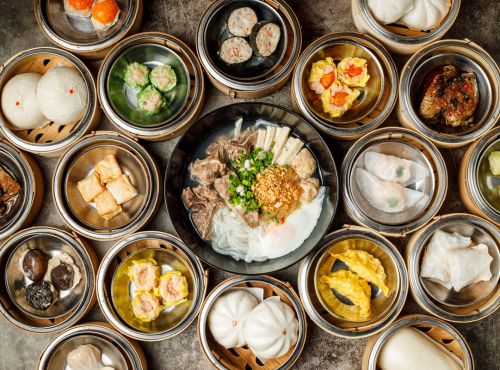
Introduction
Cantonese food has become a universal language of flavour. In fact, for many people worldwide, Cantonese food is Chinese food. Iconic dishes like chicken lo mein, wontons, dim sum, and egg foo young trace their roots to the kitchens of southern China, where centuries of culinary tradition shaped this remarkable cuisine. As a bridge connecting East and West, Cantonese cuisine blends meticulous craftsmanship with global appeal, creating dishes that continue to delight palates around the world.
Originating in Guangdong province, Cantonese cuisine is celebrated for its emphasis on fresh ingredients, delicate flavours, and meticulous preparation. The region’s access to abundant seafood, fertile lands, and vibrant trading ports has shaped its evolution. Over time, Cantonese food has become the cornerstone of Chinese-American cuisine and a global ambassador for Chinese culinary traditions. Its influence is undeniable, from the bustling streets of Hong Kong to the dining tables of Europe and North America.
Overview
This post builds on themes explored in earlier entries in The Great Traditions of Chinese Cuisine series and The Eight Great Tastes of Chinese Cuisine. It also ties into Cha Chaan Teng: Hong Kong’s Diner Food, which highlights the fusion and casual dining adaptations of Cantonese culinary techniques.
In this fourth installment of the series, we will explore the defining flavours, signature dishes, cooking techniques, and enduring global influence of Yue cuisine, uncovering the artistry and cultural depth that make it one of the most beloved Chinese culinary traditions.
Geographical and Cultural Context
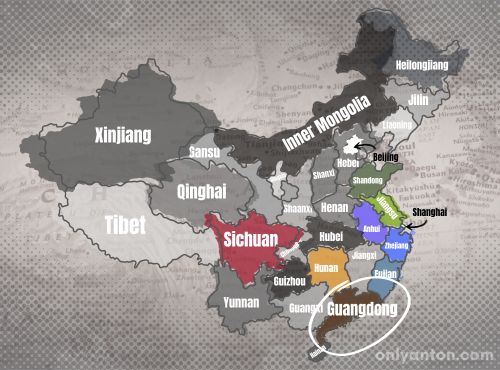
Cantonese cuisine is deeply rooted in the geography and culture of Guangdong province, a region along China’s southern coast. Bordered by the South China Sea, Guangdong enjoys a subtropical climate with warm temperatures and high humidity year-round, creating fertile plains and access to abundant fresh seafood. This proximity to the sea and rich agricultural land has shaped Cantonese cuisine’s emphasis on delicate seafood and fresh seasonal vegetables. The South China Sea has also served as a gateway for culinary exchange, influencing Guangdong’s flavours while allowing its culinary traditions to flourish abroad.
Proximate Influence
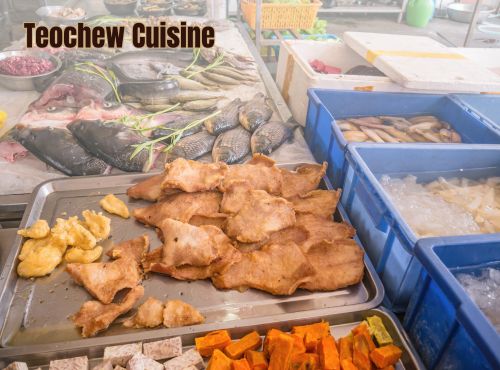
Cultural diversity plays a crucial role in Guangdong’s culinary identity. The region is home to various ethnic minorities whose culinary traditions have blended with Cantonese cooking to create a colourful tapestry of flavours. Teochew cuisine (Chaozhou or Chiuchow) originated from Guangdong’s Chaoshan region. It is renowned for its refined techniques and hallmark superior broth (shangtang), a rich stock that forms the foundation of many dishes. The “food table” (jiat dot), a Teochew tradition akin to a banquet-style feast, features delicacies like sharkfin soup, braised goose, and steamed fish. Hakka cuisine, by contrast, is characterized by hearty, rustic fare. Dishes such as salt-baked chicken and Hakka stuffed tofu reflect the migratory history and resourcefulness of the Hakka people.
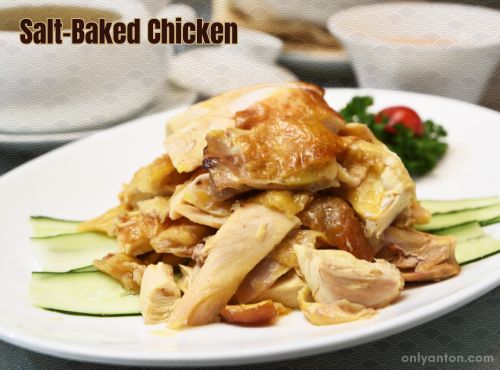
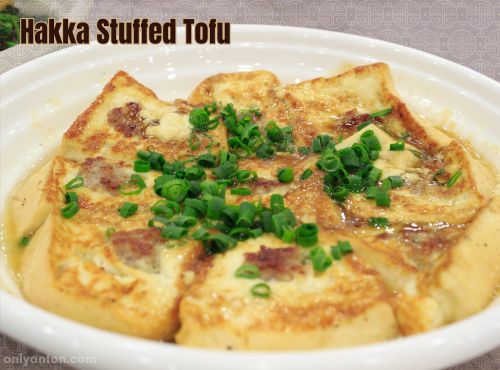
Guangdong’s influence extends beyond its borders, shaping the cuisines of neighbouring provinces. While culturally Cantonese in many respects, Guangxi is distinct due to the contributions of the Zhuang minority, which introduced bold and earthy flavours into the culinary mix. On the other hand, Hong Kong has become a global symbol of Cantonese dining, blending tradition with modernity and innovation to elevate Yue cuisine internationally.
International Impact of Cantonese Food

The international influence of Guangdong cuisine cannot be overstated. As a major trading hub, Guangdong’s ports facilitated the global spread of Cantonese cooking techniques and ingredients. The Chinese diaspora, a significant portion of which hails from Guangdong, played a pivotal role in introducing Cantonese food to Southeast Asia, North America, Europe, and beyond. Today, one can find the flavours of Guangdong in Chinatown restaurants and fine dining establishments worldwide, a testament to the enduring appeal of Cantonese cuisine.
Cantonese Key Flavours and Ingredients
The geography of Guangdong province has deeply influenced Cantonese cuisine. It is a region blessed with a coastal location and fertile lands. The South China Sea provides an abundance of fresh seafood, including fish, shrimp, crab, and shellfish, which are staples in Cantonese cooking. Poultry, such as chicken and duck, and a wide variety of fresh, seasonal vegetables also play a significant role, reflecting the region’s agricultural abundance. This geographical bounty has shaped Guangdong’s culinary identity. The emphasis is on freshness and a close connection to the natural flavours of its ingredients.
Cantonese Flavour Profile
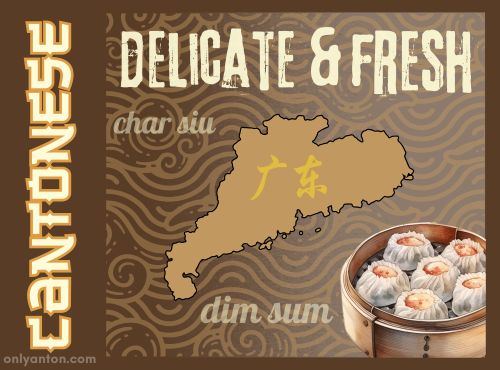
At the heart of Yue cuisine is an unwavering commitment to delicacy and fresh, natural flavours. Cantonese dishes prioritize preserving the original taste of ingredients. Chefs often use cooking techniques that highlight the purity of ingredients rather than masking them. Whether it’s the light sweetness of a steamed fish or the crunch of freshly sautéed greens, the goal is to let the ingredients speak for themselves.
Cantonese cooking relies on mild seasoning to enhance rather than overpower dishes. Soy sauce, ginger, garlic, and scallions are staples, providing a subtle depth of flavour while allowing the primary ingredients to shine. For example, ginger pairs beautifully with seafood to counteract brininess, while garlic enriches the complexity of stir-fried or braised dishes.
Superior broth (shangtang) emphasizes delicacy, a hallmark of Teochew cuisine influencing Cantonese cooking. This rich, aromatic stock forms the foundation of many dishes, reflecting the region’s refined culinary approach and attention to detail.
Cantonese Staples and Specialties
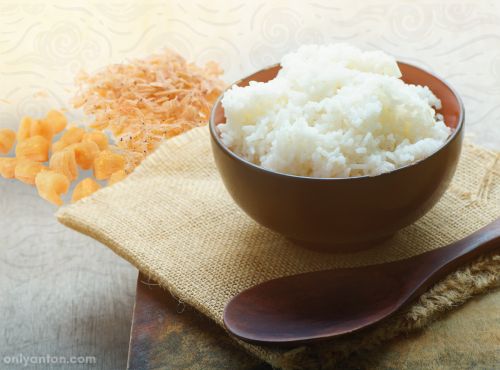
Rice, noodles, and dim sum are essential elements in Cantonese cuisine. They reflect the southern Chinese preference for rice-based dishes in contrast to the wheat-heavy staples of northern Chinese cuisines. Iconic ingredients such as dried seafood (abalone, scallops) and fermented sauces (soybean paste, oyster sauce) add layers of umami to Cantonese dishes, ensuring every bite is simple and sophisticated.
Cantonese Signature Dishes
Cantonese cuisine is famous for its diverse and iconic dishes. Each dish testifies to an emphasis on fresh ingredients, delicate preparation, and cultural richness. From savoury delicacies to comforting staples and sweet desserts, Cantonese food offers a culinary experience that delights every palate.
Dim Sum (点心)
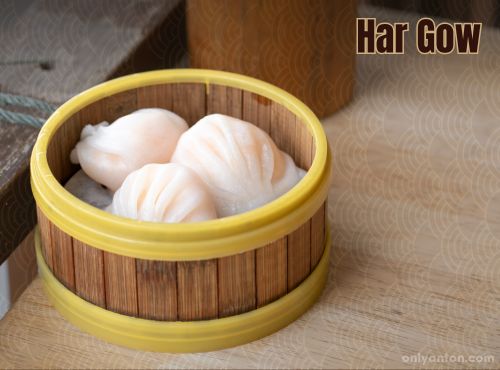
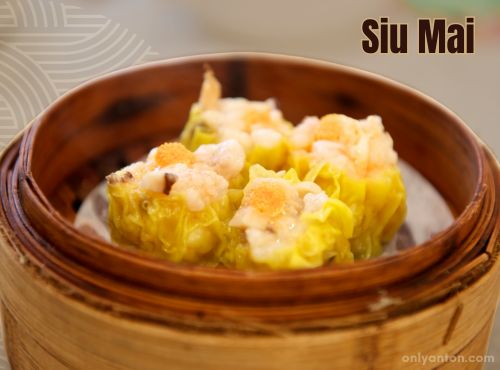
Dim sum is the cornerstone of Cantonese cuisine, an artful collection of small, handcrafted dishes typically enjoyed with tea. These bite-sized delights reflect the precision and care that define Yue cooking. The classic shrimp dumplings (har gow, 虾饺) feature translucent wrappers encasing juicy shrimp. Siu mai (烧卖) combines shrimp and pork in delicate parcels.
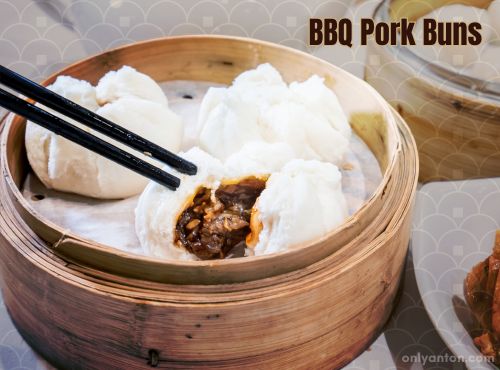
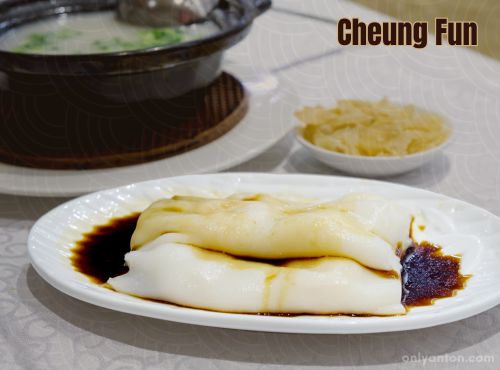
Barbecue pork buns (char siu bao, 叉烧包) balance sweetness and savoury flavours. Silky rice noodle rolls (cheung fun or changfen, 肠粉) offer a satisfying texture with fillings like shrimp, barbecue pork, or beef. A trip to a dim sum parlour is as much about the ritual of sharing as it is about savouring the variety of flavours and textures.
Roast Meats (烧味)
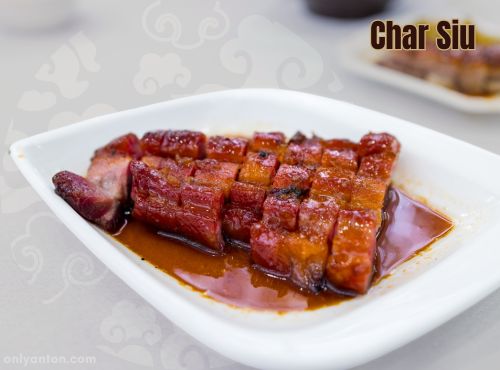
Cantonese roast meats, or siu mei, are among the most visually striking and flavourful aspects of Yue cuisine. Char siu (叉烧), with its glistening red glaze, is marinated in a sweet-savoury mixture of soy sauce, hoisin, and honey before being roasted to perfection.
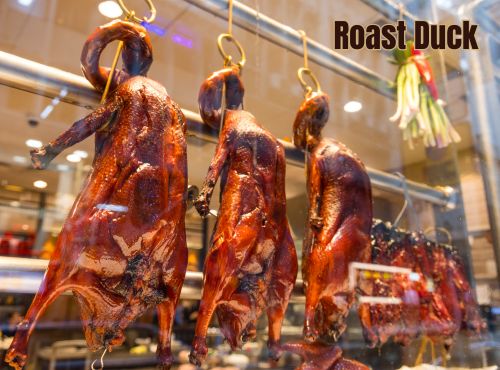
Roast duck, another specialty, features crispy skin and tender meat, often served with plum sauce. Compared to Peking Duck, with its emphasis on crispy skin and thin pancakes, Cantonese roast duck focuses on balanced seasoning and a slightly less theatrical presentation. Cantonese restaurants often display these dishes in restaurant windows, drawing diners with their vibrant colours and tantalizing aromas.
Cantonese Seafood Dishes
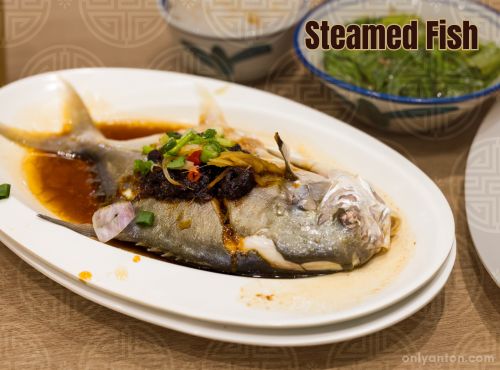
Steamed fish with soy sauce (qingzheng yu, 清蒸鱼) epitomizes Cantonese cuisine’s commitment to fresh ingredients and minimal seasoning. A whole fish is lightly steamed with ginger and scallions. A drizzle of soy sauce finishes the dish, allowing the fish’s natural sweetness to shine.
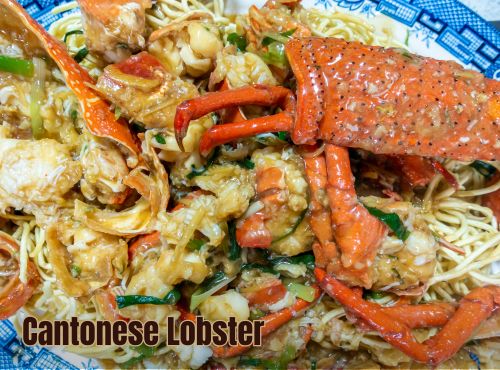
Another highlight is lobster with ginger and scallions (jiangcong longxia, 姜葱龙虾). The fragrant, aromatic flavours of ginger and scallions enhance the natural sweetness of the lobster.
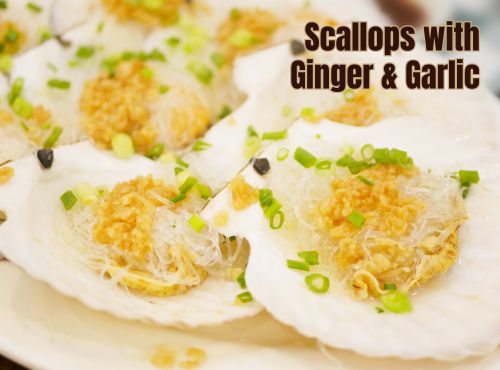
Steamed scallops with ginger and garlic (suanrong zheng shanbei, 蒜蓉蒸扇贝) bring a delicate touch to the table. The scallops are cooked to perfection, complemented by the boldness of garlic and ginger.
For those seeking simplicity, white boiled shrimp (baizhuoxia, 白灼虾) offers a minimalist approach. Boiling fresh shrimp in salted water preserves their natural sweetness. The shrimp are usually served with a light dipping sauce.
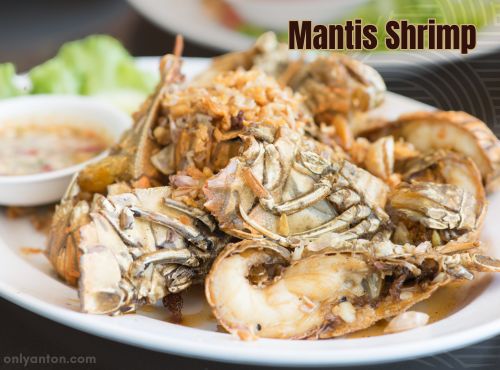
Finally, mantis shrimp (laniaoxia, 濑尿虾) adds a touch of adventure, featuring either steamed or salt-and-pepper stir-fried shrimp with a unique texture that sets it apart.
Cantonese Comfort Foods
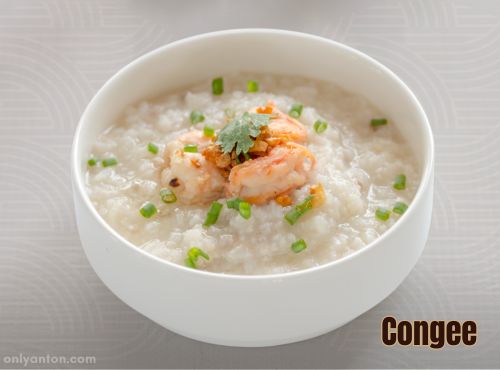
Few dishes compare to congee (zhou, 粥) for a taste of Cantonese comfort. This creamy rice porridge is a versatile staple. Congee is often paired with savoury toppings such as pork and century egg, tender beef slices, or chicken and shiitake mushrooms. A drizzle of soy sauce or a splash of sesame oil elevates the dish further, making it a soothing option for any time of the day.
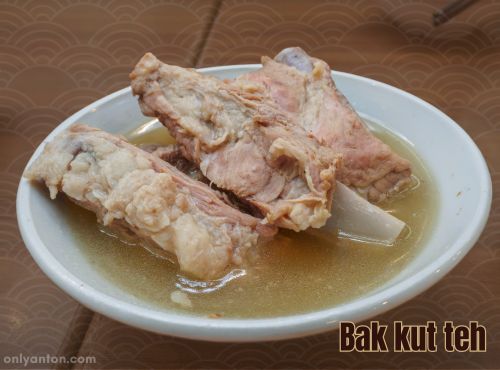
Another noteworthy addition is bak kut teh. This Teochew-style pork rib soup is simmered with herbs and spices like star anise, cloves, and cinnamon. This hearty broth bridges the traditions of Teochew and Cantonese cuisines. The soup offers balanced, nuanced flavours that bring comfort to the soul.
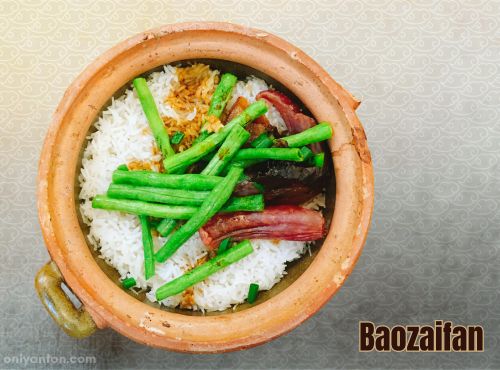
Then there is little pot rice (baozaifan, 煲仔饭). The rice cooks slowly in a clay pot, developing a crispy bottom layer known as fan jiao. Toppings can range from salted fish and chicken to Chinese sausages, creating a customizable and hearty meal. The aroma of soy sauce and sesame oil wafting from the clay pot adds to the allure of this dish, making it a beloved staple of Cantonese home cooking.
Desserts
Cantonese cuisine is known for its refined and delicate desserts, often featuring smooth textures and subtly sweet flavours.
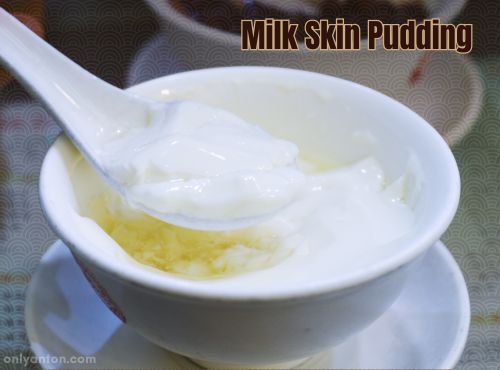
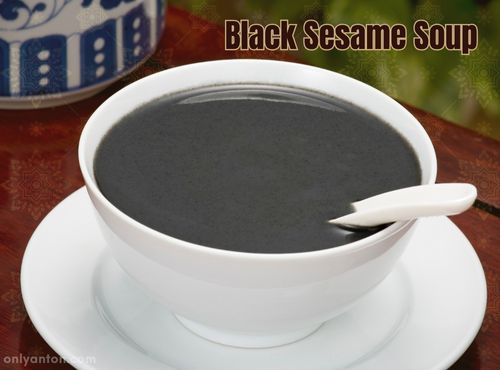
One such delicacy is Milk Skin Pudding (shuang pi nai, 雙皮奶), a traditional dessert from Shunde, Guangdong. This silky custard is made by gently heating fresh milk until a thin “skin” forms on the surface. The milk is mixed with egg whites and sugar before being carefully poured back under the original skin. The custard is then steamed to perfection, creating a second delicate layer. The result is an incredibly smooth, creamy pudding with a light, naturally sweet flavour. Milk Skin Pudding may be eaten either warm or chilled. Sometimes, the pudding is topped with red beans, lotus seeds, or ginger juice for extra depth.
Another classic is Black Sesame Soup (zhimahu, 芝麻糊). This smooth and nutty dessert is made from ground black sesame seeds with an earthy aroma and deep, roasted flavour. It is a comforting and nourishing dessert that is typically served hot. The soup is often believed to have health benefits for hair and skin in traditional Chinese medicine.
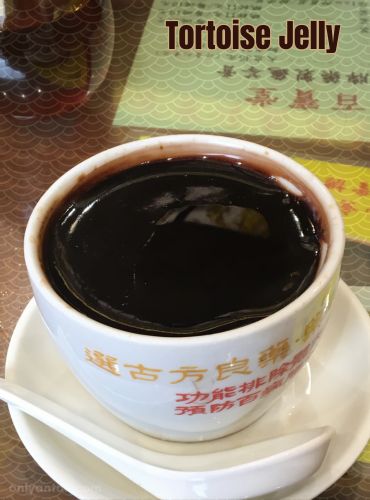
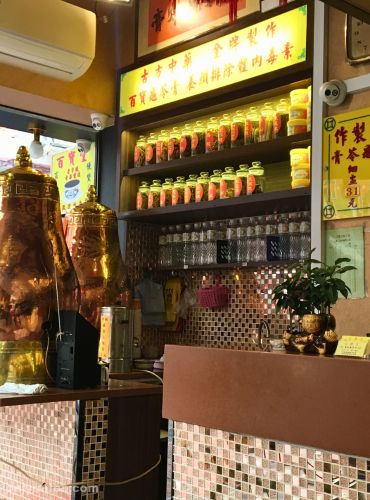
Tortoise Jelly (龟苓膏, Guilinggao) offers a unique experience, combining medicinal herbs with a slightly bitter, licorice-like flavour. Made from turtle shell powder (or herbal alternatives) and a variety of Chinese herbs, this jelly is thought to cool the body and promote overall wellness. It is usually served chilled with a drizzle of honey or syrup to balance its natural bitterness.
While some may find guilinggao off-putting, I found it an intriguing and enjoyable treat. I tried it during a visit to a traditional stand in Hong Kong. The gleaming brass vats, walls covered in Chinese signage, and the interplay of honey-sweetened bitterness made for a memorable and authentic experience.
Cantonese Cooking Techniques
Cantonese cuisine’s reputation for delicate flavours and refined preparation is deeply tied to its cooking techniques. These methods prioritize preserving the natural essence of ingredients while enhancing their appeal through precise execution.
Steaming
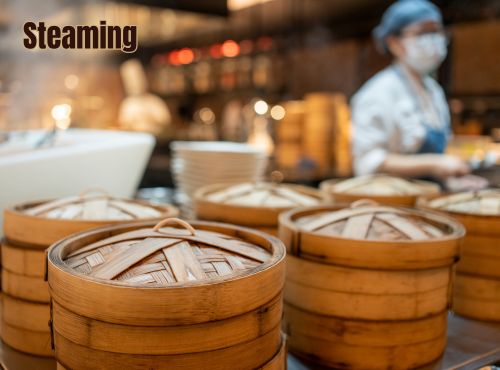
Steaming is one of the most essential techniques in Cantonese cooking. This technique has the ability to maintain the natural flavours, textures, and nutritional integrity of ingredients. In dim sum, delicate wrappers encasing shrimp dumplings (har gow) or pork-filled siu mai are perfectly cooked using gentle steam. Steaming also takes center stage in dishes like qingzheng yu (清蒸鱼) or steamed fish with soy sauce. In this dish, a whole fish is steamed with ginger and scallions. A drizzle of soy sauce and hot oil allows the fish’s sweetness to shine through with minimal intervention. The versatility and health benefits of steaming have made it a cornerstone of Cantonese cuisine.
Stir-Frying
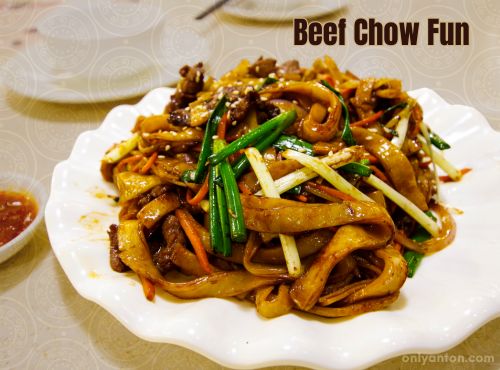
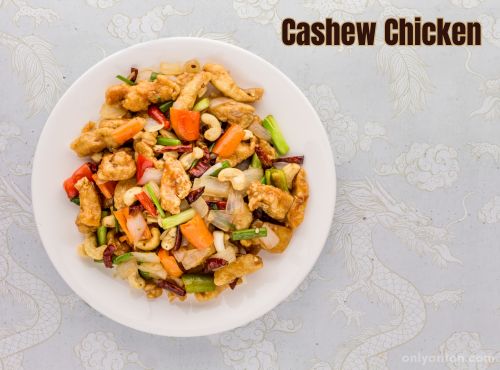
With its quick, high-heat method, stir-frying is another quintessential Cantonese cooking technique. This method locks in the freshness of ingredients while creating a slight char that adds depth to flavours. The process involves constant motion in a wok, allowing ingredients to cook evenly and absorb seasonings fully. Classic dishes like beef chow fun (gan chao niu he) and chicken with cashew nuts showcase this technique. Stir-frying creates bold, aromatic flavours while preserving the natural texture of the main ingredients.
Roasting
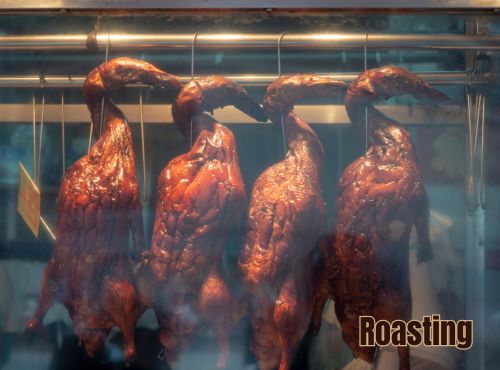
The art of roasting meats, known as siu mei (烧味), is a hallmark of Cantonese culinary tradition. Char siu (叉烧), or barbecued pork uses a marinade made from a sweet-savoury mix of soy sauce, hoisin, honey, and five-spice powder. Roasting the meat develops the caramelized exterior. Roast duck, another standout, combines crispy skin and tender meat through meticulous preparation. The duck is seasoned with a flavourful marinade, air-dried for optimal texture, and perfectly roasted. Cantonese roast meats are often displayed in restaurant windows, their glistening appearance a testament to the craft behind their preparation.
These techniques—steaming, stir-frying, and roasting—are the backbone of Cantonese cuisine. Each reflects the region’s dedication to freshness, precision, and flavour. Together, they demonstrate the artistry and skill that make Cantonese food one of the most beloved Chinese culinary traditions.
Modern Influence and Global Appeal
Cantonese cuisine’s global reach is a testament to its adaptability and universal appeal. Over centuries, it has transcended its origins in Guangdong province to become the dominant style of Chinese food internationally, shaping how the world perceives Chinese cuisine.
International Success of Yue Cuisine
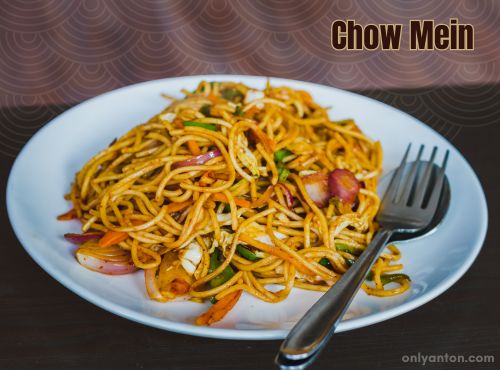
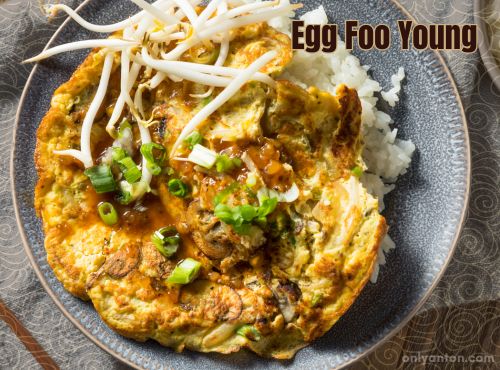
Cantonese food’s international prominence can be traced to the Chinese diaspora. A significant number of immigrants from Guangdong brought their culinary traditions to new shores. Iconic dishes like chow mein, egg foo young, and wonton soup became staples in Chinese-American cuisine, offering a taste of Guangdong adapted to local palates. These dishes introduced Cantonese flavours to global audiences, often becoming synonymous with Chinese food itself in many countries.
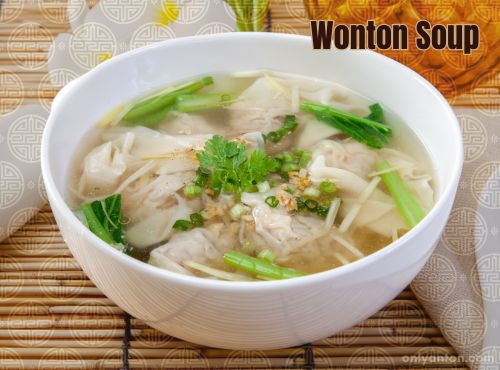
Fusion and Innovation
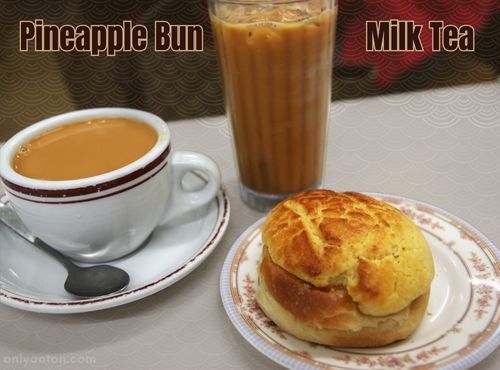
Cantonese cuisine has embraced fusion and innovation, evolving to incorporate new ingredients and dining trends. This adaptability is epitomized in Hong Kong by cha chaan teng (Hong Kong diners). Traditional Cantonese techniques blend with Western influences and ingredients. Pineapple buns (bo lo bao), silky milk tea, and fusion-style dim sum exemplify this creative melding of East and West. The Chinese-American dish chop suey is a simplified, stir-fried amalgamation of vegetables and meat. It is an example of how Cantonese cooking adapted to meet the expectations of Western diners while retaining its roots.
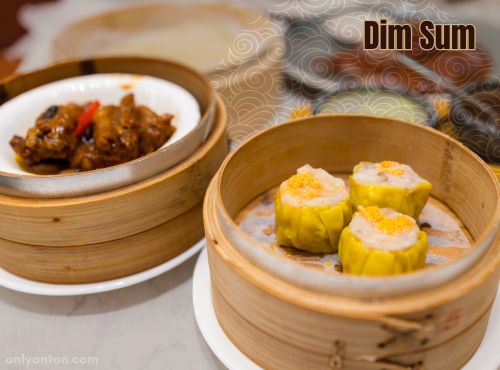

Continued Popularity of Cantonese Cuisine
Despite its transformations, Cantonese cuisine remains deeply connected to its traditional foundations, ensuring its enduring popularity. Dim sum continues to thrive as a beloved dining experience. High-end restaurants reinterpret classics like char siu and qingzheng yu with contemporary flair. From humble street stalls in Hong Kong to Michelin-starred establishments in global capitals, Cantonese cuisine continues to captivate palates with its delicate flavours and timeless appeal.
Cantonese food’s ability to balance tradition with innovation ensures its relevance in an ever-changing culinary landscape. It has cemented its place as one of the most influential and cherished Chinese culinary traditions worldwide.
Conclusion
Cantonese cuisine’s defining features—fresh ingredients, delicate flavours, and meticulous preparation—have made it a beloved culinary tradition in China and worldwide. Its commitment to preserving the natural essence of ingredients and its adaptability have helped Cantonese food become a global ambassador of Chinese cuisine, from the bustling dim sum parlours of Hong Kong to high-end restaurants worldwide.
This post, part of The Great Traditions of Chinese Cuisine series, has explored Yue cuisine’s unique characteristics, iconic dishes, and global influence. In the next installment, we’ll focus on Jiangsu Food: The Great Tradition of Huaiyang Cuisine. We’ll uncover the refined artistry and rich flavours that define this esteemed culinary tradition.
What About You?
What are your favourite Cantonese dishes or dim sum experiences? Have you tried iconic dishes like char siu, baozaifan, or guilinggao? Share your thoughts and stories in the comments below. I’d love to hear about your culinary adventures!
Further Reading and Resources
Related Posts on Only Anton
Explore more about Chinese culinary traditions and Cantonese cuisine through these related posts on the Only Anton website:
- Chinese Cuisine: The Eight Great Traditions: Discover the diversity of Chinese culinary heritage, from Anhui to Zhejiang, and how regional traditions shape the Eight Great Cuisines.
- Sichuan Food: The Great Tradition of Chuan Cuisine: Experience the bold flavours and iconic dishes of Sichuan cuisine, from Mapo Tofu to spicy Hotpot.
- Shandong Food: The Great Tradition of Lu Cuisine: Learn about Shandong cuisine’s fresh ingredients, aromatic flavours, and its impact on Chinese culinary history.
- The Eight Great Tastes of Chinese Cuisine: A closer look at the flavour profiles that define the Eight Great Traditions of Chinese Cuisine.
- Cha Chaan Teng: Hong Kong’s Diner Food: Explore the fusion cuisine of Hong Kong’s iconic tea restaurants, blending Cantonese traditions with Western influences.
External Resources
These resources give interested readers a deeper appreciation of Cantonese food’s culinary traditions, global influence, and timeless appeal.
Books
- The Food of China by E. N. Anderson (1990): A comprehensive look at Chinese culinary traditions, including regional cuisines like Cantonese. Find it at the library, explore online sources, or get a copy here.
- All Under Heaven: Recipes from the 35 Cuisines of China by Carolyn Phillips (2016): A detailed exploration of China’s diverse food cultures, with an excellent section on Guangdong cuisine. Discover it at your library, look it up online, or purchase your copy here.
- The Authentic Cantonese Cookbook: Exploring the Flavors of Cantonese Cuisine by Remi Moris (2023): A modern guide to Cantonese cooking, featuring authentic recipes and techniques highlighting this celebrated cuisine’s delicate and fresh flavours. Find it at your library, browse online, or grab your copy here.
- The Food and Cooking of South China by Terry Tan (2009): A comprehensive exploration of southern Chinese cuisine, including Cantonese, Teochew, and Hakka traditions, with recipes and cultural insights. Look it up at a local library, browse online, or buy your copy here.
Websites and Articles
- Taste Atlas: A global food atlas offering detailed descriptions of traditional dishes, ingredients, and cuisines, including a comprehensive section on Chinese and Cantonese food with iconic recipes and cultural insights.
- The Spruce Eats: A trusted culinary resource providing recipes, cooking tips, and cultural context, with a dedicated section on Chinese cuisine that highlights Cantonese dishes, cooking techniques, and their history.
- “How to Enjoy Dim Sum in Hong Kong” by Luxe City Guides, Hong Kong Tourism Board: A helpful guide to experiencing Hong Kong’s dim sum culture, from iconic dishes to dining etiquette and top recommendations. Read the article here.
Videos
- YouTube Channel: Made with Lau: A family-run channel showcasing authentic Cantonese recipes with insights into techniques and traditions.
- Chinese Cooking Demystified: A YouTube channel dedicated to authentic Chinese recipes, techniques, and cultural insights, with an emphasis on simplifying traditional dishes, including Cantonese classics.
- “What’s Cantonese HOME cooking like?” Chinese Cooking Demystified: A video showcasing everyday Cantonese home cooking, highlighting staple ingredients, traditional techniques, and the cultural significance of family meals. Watch the video here.
- “The Art of Dim Sum: 50 Years of Experience, 1 Dim Sum Masterclass,” W2 Kitchen: A fascinating look at the craftsmanship and tradition behind dim sum, featuring a dim sum master sharing decades of expertise. Find the video here.
- “Everything You Need to Know About Eating Dim Sum,” Food Network: A beginner-friendly guide to enjoying dim sum, covering classic dishes, dining etiquette, and tips for navigating the dim sum experience. See the video here.




